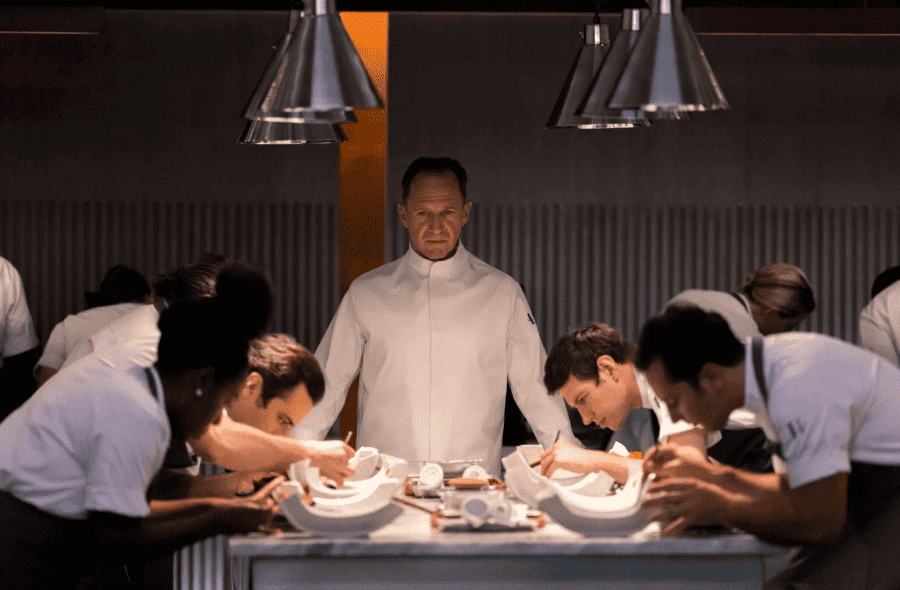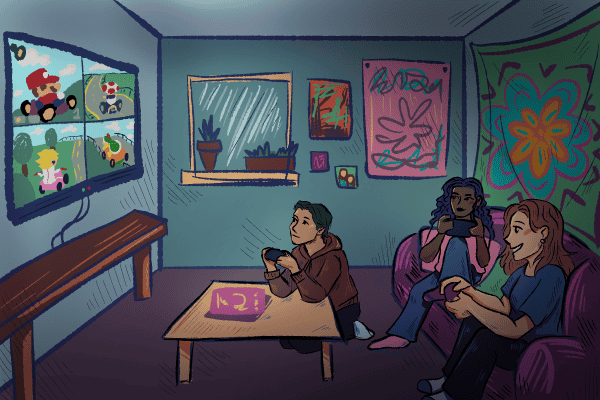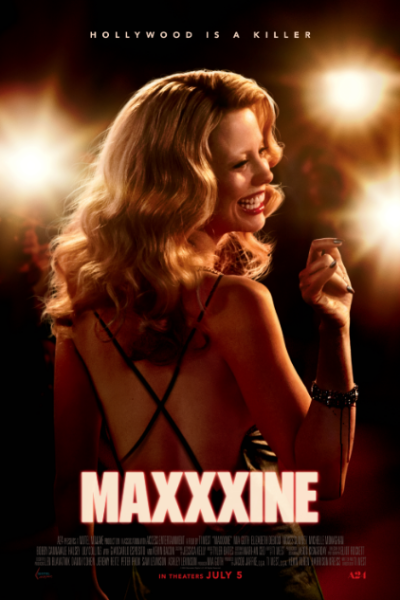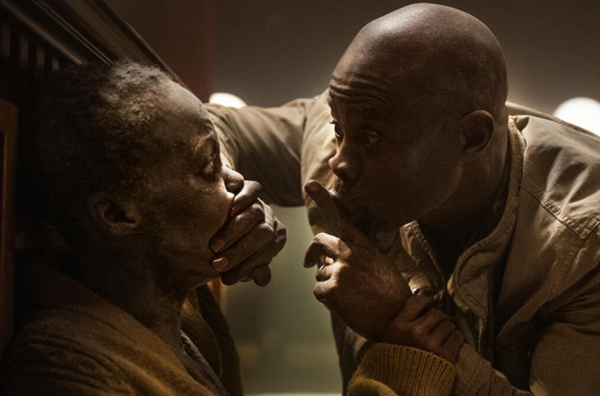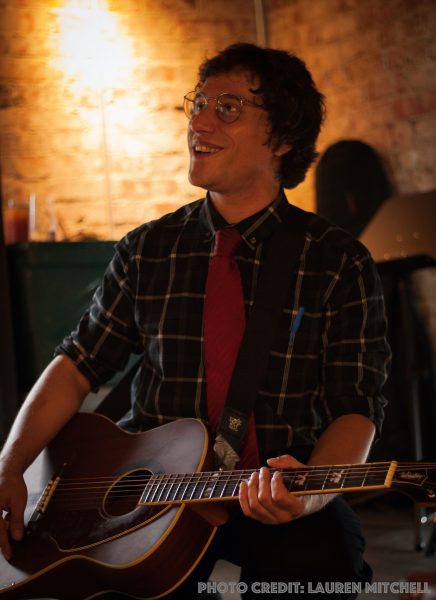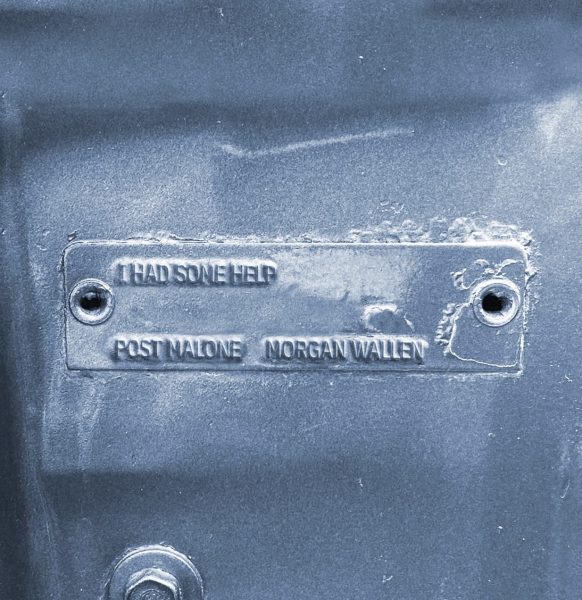Culture Pick: “The Menu” serves up comedy and suspense
January 18, 2023
Anyone who has ever worked a service job understands the frustration of being under pressure and unappreciated by customers who are in a rush, distracted or even just plain rude. Through the lens of director Mark Mylod’s new movie “The Menu,” bad customers are more than an inconvenience; in fact, they can drive you insane.
From the beginning, the film creates a disorienting experience, as it opens with overzealous foodie Tyler, played by Nicholas Hoult, yelling at Margot, played by Anya Taylor-Joy, to stop smoking lest she ruin her palate for the expensive meal that is about to follow. Tyler is an eccentric character who considers cooking to be the ultimate art form.
The pair is joined by an eclectic cast of wealthy diners: a group of men who work in finance, an older couple celebrating their anniversary, an aging actor and his assistant, and a high-end food critic and her sycophantic colleague. The restaurant, Hawthorne, at $1,200 a meal, only exists to serve the elite.
Together, the group takes a boat to the island where the restaurant is located. Upon arriving, they receive a brief tour that reveals several of Hawthorne’s foreboding oddities. Military-style barracks house the kitchen staff, and no one is permitted to enter the head chef’s house. The guests and audience have very little time to ponder these details because once the meal begins, even more disturbing signs appear.
As the dinner unfolds, the guests begin to realize that they might lose more than the price of attendance. One thing is clear: this is one kitchen staff that will not be overlooked.
Made with a budget of $30 million, “The Menu” was written by Seth Reiss and Will Tracy, whose trip to a real-life island restaurant served as inspiration.
“I went to a restaurant in Norway on an island. It’s kind of like in the film. We took a boat out and it was just only, maybe, 12–15 customers. We were given a tour of the island. I’m a bit of a claustrophobic, nervous person and I’m in a foreign country, and it was dark on the boat ride, and on an island, what if something goes wrong?” Tracy told Scott Myers.
By far one of the most compelling and disturbing characters is Ralph Fiennes’ Julian Slowik, known to his kitchen staff as simply “Chef.” When he talks to his cooks, Slowik sounds like a general issuing a military order. Fiennes delivers a captivating performance, and he consistently leaves the audience trying to piece together the darkness lying behind his calm exterior.
Although “The Menu” is certainly a thriller and a critique of the service industry, it’s also a satire of food culture. In fact, this is one of the angles that provides Mylod with the most mileage.
For example, during one intense scene, Chef performs a classic cooking show fake-out when he judges another character’s dish, declaring, “Wow. It’s actually quite … bad.” While this is a joke reminiscent of other food television satires, it’s also terrifying in the context of the film.
This juxtaposition of the comedic and horrific was intentional, and Mylod spoke about this aspect of the story in an interview with mymovies.
“Hopefully, the cinematic ride of ‘The Menu’ is such fun, and to be in a big theatre with a room full of people who are quite literally gasping and laughing, sometimes at the same time, is a real joy,” Mylod said.
In order to recreate the setting of a high-end restaurant, the crew hired chef Dominique Crenn as a culinary consultant. Crenn, who attained three Michelin stars with her restaurant Atelier Crenn, helped create several of the dishes shown in the film. Another acclaimed chef, John Benhase, was present for the vast majority of the filming.
This influence is apparent in every dish, including The Island, a conceptual seafood first course intended to represent the ecosystem around the restaurant. Chef Slowik reminds the guests that this beautiful natural world would, in fact, be better off without their interference in it.
“Eight weeks. I was there every day of filming for all of the scenes within the restaurant, which is 90% of the movie. I watched every single take for every single part of the film that was filmed within the restaurant,” said Benhase in a recent interview with Vanity Fair.
Mylod also uses on-screen captions, stylized as dishes in the titular menu of the restaurant, to make his points. Some of the most effective parts of the film, these captions are jarring, hilarious and cutting all at the same time.
Throughout the course of the movie, the audience is forced to reconsider who, if anyone, they are cheering for. Almost all of the characters contain both humanity and hypocrisy. The food critic claims to be aware of the class history of cooking yet displays an incredible lack of self-awareness in the face of others’ suffering. Chef claims to have lost his love of cooking, but he still spends the movie trying to create his masterpiece, no matter the cost. In the world of “The Menu,” there are few heroes. Instead, there are sympathetic villains and unsympathetic victims.
“The Menu” can also be interpreted as an analysis of commercialized art. It’s an excellent depiction of what happens when an artist sacrifices everything in the pursuit of his or her craft. It also demonstrates the dangers of pricing out more and more customers until the only ones who can afford your art are those who can never be satisfied.
All of that said, does “The Menu” deserve the hype? Made for $30 million, it has grossed over $75 million — impressive considering it’s also streaming on HBOmax. It also has an 89% critics’ score on Rotten Tomatoes.
Although it might not be for everyone, this film is perfect for anyone who enjoys dark comedies or has ever laughed at a show on Food Network because the chefs took themselves a little too seriously. Hopefully, none of us ever have a meal quite as well-prepared as the one in “The Menu.”

